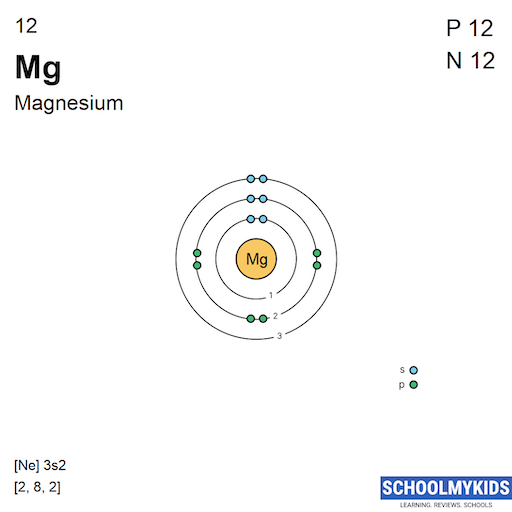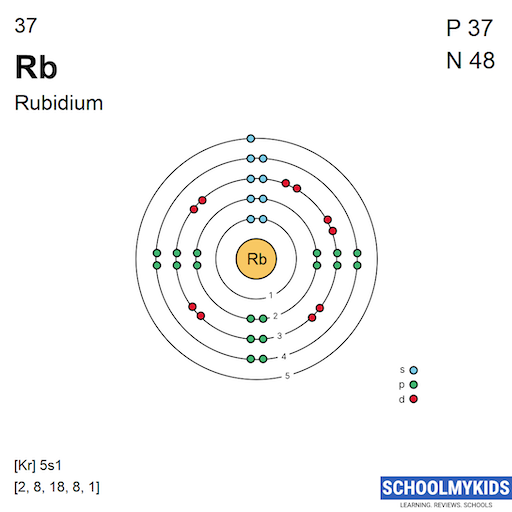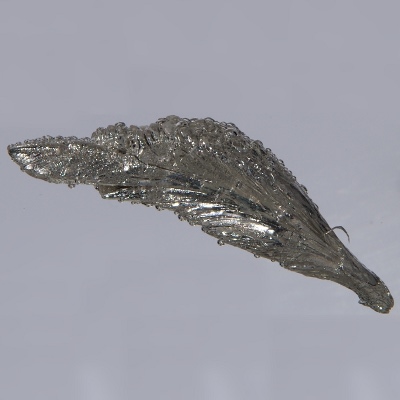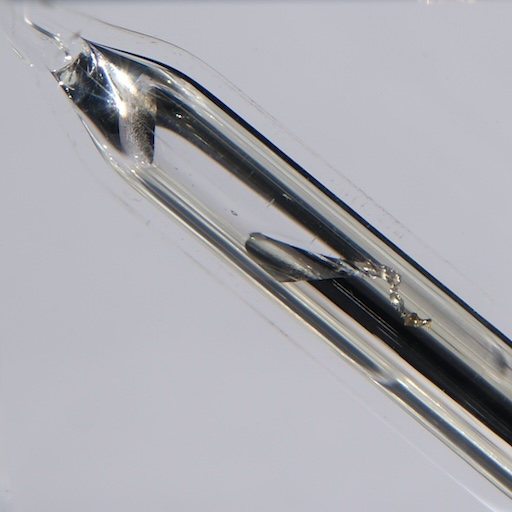Periodic Table Element Comparison: Compare Elements - Magnesium vs Rubidium
Compare Magnesium and Rubidium
Compare Magnesium and Rubidium on the basis of their properties, attributes and periodic table facts. Compare elements on more than 90 properties. All the elements of similar categories show a lot of similarities and differences in their chemical, atomic, physical properties and uses. These similarities and dissimilarities should be known while we study periodic table elements. You can study the detailed comparison between Magnesium vs Rubidium with most reliable information about their properties, attributes, facts, uses etc. You can compare Mg vs Rb on more than 90 properties like electronegativity , oxidation state, atomic shells, orbital structure, Electronaffinity, physical states, electrical conductivity and many more.
Facts
| Name | Magnesium | Rubidium |
| Atomic Number | 12 | 37 |
| Atomic Symbol | Mg | Rb |
| Atomic Weight | 24.305 | 85.4678 |
| Phase at STP | Solid | Solid |
| Color | Silver | Silver |
| Metallic Classification | Alkaline Earth Metal | Alkali Metal |
| Group in Periodic Table | group 2 | group 1 |
| Group Name | beryllium family | lithium family |
| Period in Periodic Table | period 3 | period 5 |
| Block in Periodic Table | s -block | s -block |
| Electronic Configuration | [Ne] 3s2 | [Kr] 5s1 |
| Electronic Shell Structure (Electrons per shell) | 2, 8, 2 | 2, 8, 18, 8, 1 |
| Melting Point | 923 K | 312.46 K |
| Boiling Point | 1363 K | 961 K |
| CAS Number | CAS7439-95-4 | CAS7440-17-7 |
| Neighborhood Elements | Neighborhood Elements of Magnesium | Neighborhood Elements of Rubidium |
History
| Name | Magnesium | Rubidium |
| History | The element Magnesium was discovered by J. Black in year 1755 in United Kingdom. Magnesium derived its name from Magnesia, a district of Eastern Thessaly in Greece. | The element Rubidium was discovered by R. Bunsen and G. R. Kirchhoff in year 1861 in Germany. Rubidium derived its name from the Latin rubidus, meaning 'deep red'. |
| Discovery | J. Black (1755) | R. Bunsen and G. R. Kirchhoff (1861) |
| Isolated | H. Davy (1808) | Hevesy () |
Presence: Abundance in Nature and Around Us
Parts per billion (ppb) by weight / by atoms (1ppb =10^-7 %)
| Name | Magnesium | Rubidium |
| Abundance in Universe | 600000 / 30000 | 10 / 0.1 |
| Abundance in Sun | 700000 / 30000 | 30 / 0.4 |
| Abundance in Meteorites | 120000000 / 100000000 | 3300 / 770 |
| Abundance in Earth's Crust | 29000000 / 25000000 | 60000 / 14000 |
| Abundance in Oceans | 1326000 / 337000 | 120 / 8.7 |
| Abundance in Humans | 270000 / 70000 | 4600 / 340 |
Crystal Structure and Atomic Structure
| Name | Magnesium | Rubidium |
| Atomic Volume | 13.984 cm3/mol | 55.788 cm3/mol |
| Atomic Radius | 145 pm | 265 pm |
| Covalent Radius | 130 pm | 211 pm |
| Van der Waals Radius | 173 pm | 303 pm |
| Atomic Spectrum - Spectral Lines | ||
| Emission Spectrum |  |  |
| Absorption Spectrum |  |  |
| Lattice Constant | 320.94, 320.94, 521.08 pm | 558.5, 558.5, 558.5 pm |
| Lattice Angle | π/2, π/2, 2 π/3 | π/2, π/2, π/2 |
| Space Group Name | P63/mmc | Im_ 3m |
| Space Group Number | 194 | 229 |
| Crystal Structure | Simple Hexagonal  | Body Centered Cubic  |
Atomic and Orbital Properties
| Name | Magnesium | Rubidium |
| Atomic Number | 12 | 37 |
| Number of Electrons (with no charge) | 12 | 37 |
| Number of Protons | 12 | 37 |
| Mass Number | 24.305 | 85.4678 |
| Number of Neutrons | 12 | 48 |
| Shell structure (Electrons per energy level) | 2, 8, 2 | 2, 8, 18, 8, 1 |
| Electron Configuration | [Ne] 3s2 | [Kr] 5s1 |
| Valence Electrons | 3s2 | 5s1 |
| Oxidation State | 2 | 1 |
| Atomic Term Symbol (Quantum Numbers) | 1S0 | 2S1/2 |
| Shell structure |  |  |
Isotopes and Nuclear Properties
Magnesium has 3 stable naturally occuring isotopes while Rubidium has 1 stable naturally occuring isotopes.
| Name | Magnesium | Rubidium |
| Known Isotopes | 19Mg, 20Mg, 21Mg, 22Mg, 23Mg, 24Mg, 25Mg, 26Mg, 27Mg, 28Mg, 29Mg, 30Mg, 31Mg, 32Mg, 33Mg, 34Mg, 35Mg, 36Mg, 37Mg, 38Mg, 39Mg, 40Mg | 71Rb, 72Rb, 73Rb, 74Rb, 75Rb, 76Rb, 77Rb, 78Rb, 79Rb, 80Rb, 81Rb, 82Rb, 83Rb, 84Rb, 85Rb, 86Rb, 87Rb, 88Rb, 89Rb, 90Rb, 91Rb, 92Rb, 93Rb, 94Rb, 95Rb, 96Rb, 97Rb, 98Rb, 99Rb, 100Rb, 101Rb, 102Rb |
| Stable Isotopes | Naturally occurring stable isotopes: 24Mg, 25Mg, 26Mg | Naturally occurring stable isotopes: 85Rb |
| Neutron Cross Section | 0.063 | 0.38 |
| Neutron Mass Absorption | 0.0001 | 0.0003 |
Chemical Properties: Ionization Energies and electron affinity
| Name | Magnesium | Rubidium |
| Valence or Valency | 2 | 1 |
| Electronegativity | 1.31 Pauling Scale | 0.82 Pauling Scale |
| Electron Affinity | 0 kJ/mol | 46.9 kJ/mol |
| Ionization Energies | 1st: 737.7 kJ/mol 2nd: 1450.7 kJ/mol 3rd: 7732.7 kJ/mol 4th: 10542.5 kJ/mol 5th: 13630 kJ/mol 6th: 18020 kJ/mol 7th: 21711 kJ/mol 8th: 25661 kJ/mol 9th: 31653 kJ/mol 10th: 35458 kJ/mol 11th: 169988 kJ/mol 12th: 189368 kJ/mol | 1st: 403 kJ/mol 2nd: 2633 kJ/mol 3rd: 3860 kJ/mol 4th: 5080 kJ/mol 5th: 6850 kJ/mol 6th: 8140 kJ/mol 7th: 9570 kJ/mol 8th: 13120 kJ/mol 9th: 14500 kJ/mol 10th: 26740 kJ/mol |
Physical Properties
| Name | Magnesium | Rubidium |
| Density | 1.738 g/cm3 | 1.532 g/cm3 |
| Molar Volume | 13.984 cm3/mol | 55.788 cm3/mol |
Elastic Properties | ||
| Young Modulus | 45 | 2.4 |
| Shear Modulus | 17 GPa | - |
| Bulk Modulus | 45 GPa | 2.5 GPa |
| Poisson Ratio | 0.29 | - |
Hardness - Tests to Measure of Hardness of Element | ||
| Mohs Hardness | 2.5 MPa | 0.3 MPa |
| Vickers Hardness | - | - |
| Brinell Hardness | 260 MPa | 0.216 MPa |
Electrical Properties | ||
| Electrical Conductivity | 23000000 S/m | 8300000 S/m |
| Resistivity | 4.4e-8 m Ω | 1.2e-7 m Ω |
| Superconducting Point | - | - |
Heat and Conduction Properties | ||
| Thermal Conductivity | 160 W/(m K) | 58 W/(m K) |
| Thermal Expansion | 0.0000082 /K | - |
Magnetic Properties | ||
| Magnetic Type | Paramagnetic | Paramagnetic |
| Curie Point | - | - |
| Mass Magnetic Susceptibility | 6.9e-9 m3/kg | 2.6e-9 m3/kg |
| Molar Magnetic Susceptibility | 1.68e-10 m3/mol | 2.22e-10 m3/mol |
| Volume Magnetic Susceptibility | 0.000012 | 0.00000398 |
Optical Properties | ||
| Refractive Index | - | - |
Acoustic Properties | ||
| Speed of Sound | 4602 m/s | 1300 m/s |
Thermal Properties - Enthalpies and thermodynamics
| Name | Magnesium | Rubidium |
| Melting Point | 923 K | 312.46 K |
| Boiling Point | 1363 K | 961 K |
| Critical Temperature | - | 2093 K |
| Superconducting Point | - | - |
Enthalpies | ||
| Heat of Fusion | 8.7 kJ/mol | 2.19 kJ/mol |
| Heat of Vaporization | 128 kJ/mol | 72 kJ/mol |
| Heat of Combustion | -668 J/(kg K) | - |
Regulatory and Health - Health and Safety Parameters and Guidelines
| Name | Magnesium | Rubidium |
| CAS Number | CAS7439-95-4 | CAS7440-17-7 |
| RTECS Number | - | RTECSVL8500000 |
| DOT Hazard Class | 4.1 | 4.3 |
| DOT Numbers | {1869,1418} | 1423 |
| EU Number | - | - |
| NFPA Fire Rating | 1 | 3 |
| NFPA Health Rating | 0 | 2 |
| NFPA Reactivity Rating | 1 | - |
| NFPA Hazards | - | Water Reactive |
| AutoIgnition Point | 472 °C | - |
| Flashpoint | 500 °C | - |
Compare With Other Elements
Compare Magnesium with all Group 2 elementsMagnesium vs BerylliumMagnesium vs CalciumMagnesium vs StrontiumMagnesium vs BariumMagnesium vs Radium Compare Magnesium with all Period 3 elementsMagnesium vs SodiumMagnesium vs AluminiumMagnesium vs SiliconMagnesium vs PhosphorusMagnesium vs SulfurMagnesium vs ChlorineMagnesium vs Argon Compare Magnesium with all Alkaline Earth Metal elements | Compare Rubidium with all Group 1 elementsRubidium vs LithiumRubidium vs HydrogenRubidium vs SodiumRubidium vs PotassiumRubidium vs CesiumRubidium vs Francium Compare Rubidium with all Period 5 elementsRubidium vs RhodiumRubidium vs StrontiumRubidium vs YttriumRubidium vs ZirconiumRubidium vs TinRubidium vs NiobiumRubidium vs MolybdenumRubidium vs TechnetiumRubidium vs RutheniumRubidium vs PalladiumRubidium vs SilverRubidium vs CadmiumRubidium vs IndiumRubidium vs AntimonyRubidium vs TelluriumRubidium vs IodineRubidium vs Xenon Compare Rubidium with all Alkali Metal elements |


